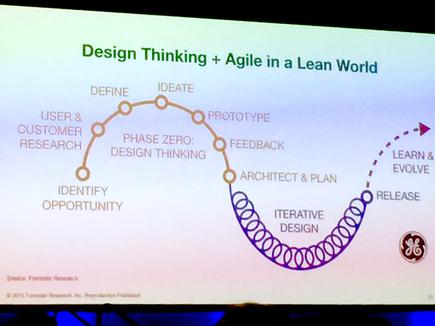How to leverage design thinking for a better customer experience
- 06 April, 2016 08:05
Great strides in technology and connectivity have seen customers expecting faster, more personalised services. In response to this, design thinking has become increasingly more important as a way of meeting those demands.
Speaking at the Forrester CX Marketing Event in Sydney, Forrester principal analyst, Ryan Hart stresses brands should start thinking more strategically, particularly as millennials become a key customer segment.
“These customers are born into a world of Google, touchscreens, multiple devices and information at their fingertips,” he said. “Right now, we’re looking at 30 per cent of the working population and by 2020, it will be up to 50 per cent and by 2025, it will be the majority, at 75 per cent.”
According to Hart, the pace of acceleration when it comes to innovation is happening so fast, we can hardly keep up. As a result, we need a type of framework to find ways to meet these changing expectations quicker – and that is where design thinking comes into play.
“GE is a great example,” he said. “In 2010, GE did an internal audit and found out that it was releasing hundreds of products across multiple business lines every year, but had zero consistent user experience strategy and was losing touch with its customers.
“When you look at GE’s old DNA, it was very much about how do we make money and it was built on a highly siloed, very traditional manufacturing model. Now for them to pivot and add design thinking into the DNA equation was a big step, but the effects were felt immediately. In fact in the first year, the company realised $15 million could be saved on development costs alone.”
Back in 2012, IBM also took onto design thinking and hired thousands of design thinkers to shift its game.
“Big banks, consulting companies, even Facebook have all realised that to embed this design thinking capability as a core competency within an organisation, there is a need to have the right talent with the right skillsets,” Hart said.

For Hart, the design thinking process needs to be open, flexible and nimble and exploration of what the customer needs and what they expect from your brand.
“Empathy is key to this process, and that’s about putting yourself in your customer’s shoes,” he explained. “This involves going out and meeting your customers, observing them and talking to them. But you need to understand both the observable and non-observable needs and often, expectations are part of the non-observable.”
One brand that understands its customers by observing them and then puts those lessons into practice is Starbucks, Hart said.
“Starbucks is very methodical, and the brand understood people don’t go there for the coffee, they go there for the experience,” he said. “They even made their round so a coffee drinker on their own doesn’t feel alone, they feel more at home and welcome.”
A design thinking hub needs to have a space where you can evaluate customer observations, ideas, insights, and then hypothesise accordingly, Hart continued.
“An innovation lab might look messy, with sticky notes, storyboards and markers,” he said. “But it is in that chaos where you’ll come up with the most incredible ideas. You need to embrace that chaos. You need to keep experimenting to find that superior customer experience.”
(suggested boxout)
Key takeaways for effective design thinking:
- Check yourself before you wreck yourself
- Commit to design thinking for key projects
- Give yourself space for design thinking
- Embed and democratise as a core competency
Follow CMO on Twitter: @CMOAustralia, take part in the CMO conversation on LinkedIn: CMO ANZ, join us on Facebook: https://www.facebook.com/CMOAustralia, or check us out on Google+: google.com/+CmoAu


